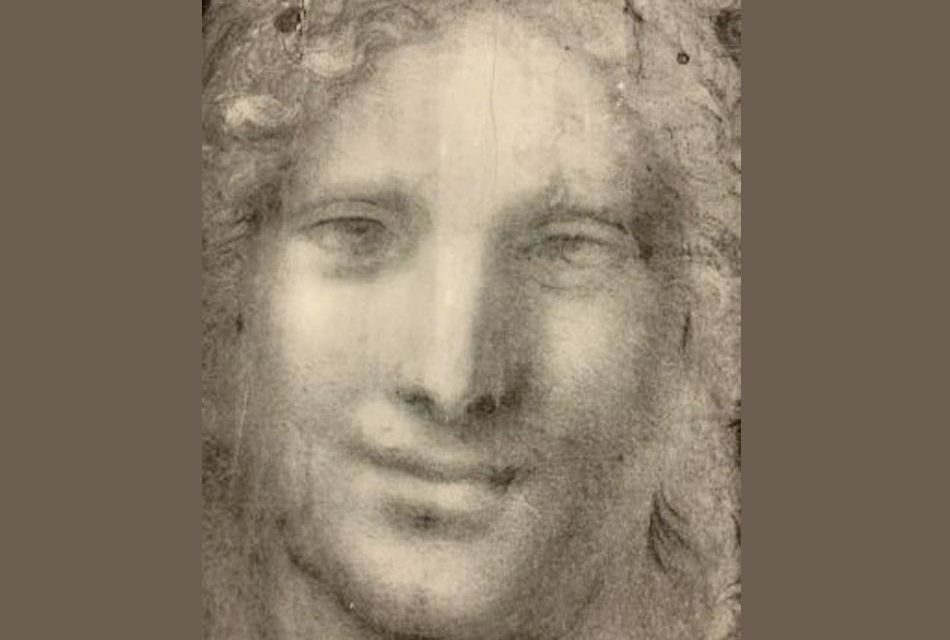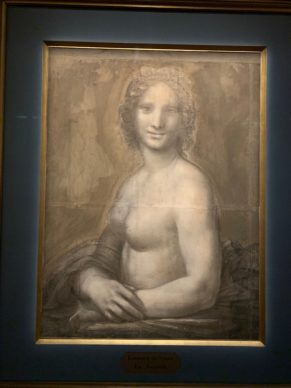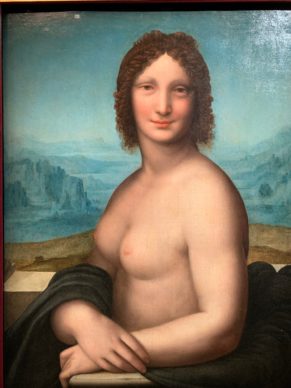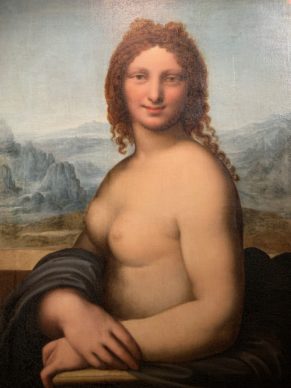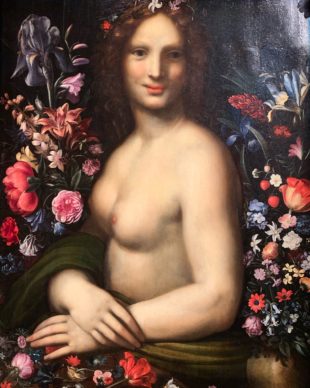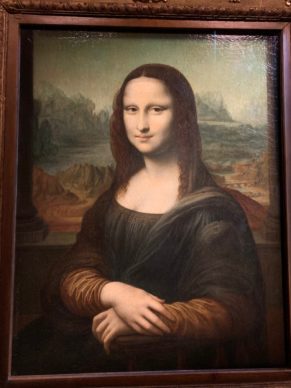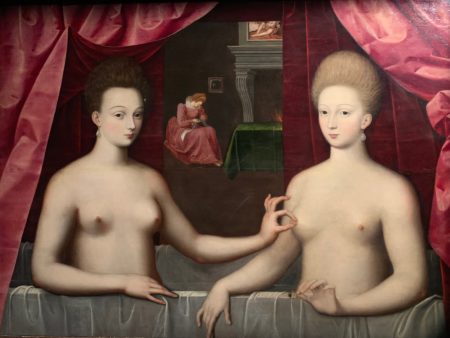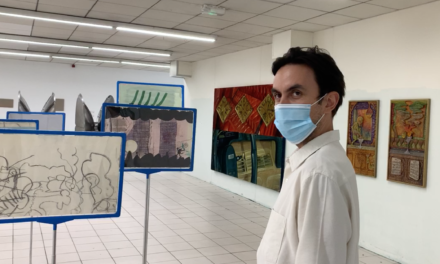Endless speculation
There’s been endless speculation in the media surrounding the nature and whereabouts of the Salvator Mundi, a heavily restored painting depicting Christ blessing the world, not because it is (or isn’t) by Leonardo but primarily because it cost 450 million dollars.
Salvator Mundi
But there are two things we know for sure, which haven’t really been talked about up until now:
– the painting was seen in Abu Dhabi last September
– the scientific authorities at the Louvre Abu Dhabi were consulted by the top Emirati powers before the sale in November 2017 at Christie’s and the answer was categorical: “no don’t buy it”. This would therefore confirm a Saudi purchase.
The Louvre
The Louvre in Paris officially requested a loan of the artwork from its owner for a large-scale exhibition this October(1) and refutes all other conjectures that are being made to do with this work.
Excessive media coverage
Today the excessive media coverage is not only inducing a certain fatigue but also eclipses the essential: Leonardo da Vinci.
Yet we can’t avoid superlatives in describing this mysterious and one-of-a-kind figure, a great among greats who was born in Italy in 1452 and died in 1519 in France.
Giorgio Vasari
The first biographer of the Renaissance artists, Giorgio Vasari ( 1511-1571), even accorded Leonardo the following description in his “Lives of Artists”: “in supernatural fashion, beauty, grace, and talent are united beyond measure in one single person”.
The wife of Francesco del Gioconda
It was the same Vasari who would give a name to a woman with an enigmatic smile who would go down in history, a work by Leonardo. He was the first to describe a portrait of a woman called Lisa, the wife of Francesco del Giocondo. In France the painting would therefore come to be known, taking the husband’s surname, as “La Joconde”.
Mona Lisa
“Joconde” or the Mona Lisa, probably the most famous painting in the world, has now become a generic way of referring to the peak of creation.
Little is known about it but there’s another French painting that has been called “Joconde” or Mona Lisa.
Nude Mona Lisa
This is the “Joconde nue” (Nude Mona Lisa) belonging to the collections at the Domaine de Chantilly located 50 kilometres from Paris. For a long time it has been the subject of numerous speculations and now it features in a superb exhibition. An excellent introduction to the blockbuster show at the Louvre in October.
Chantilly
At Chantilly three specialists have studied the birth and legacy of this exceptional creature: Mathieu Deldicque, curator at Chantilly’s Musée Condé, Guillaume Kazerouni, specialist in French 17th-century painting, and Vincent Delieuvin who is also co-organizing the retrospective at the Louvre.
Pouncing pattern
It’s a large drawing on board that was acquired at great expense by the Duke d’Aumale in 1862. In this strange and fascinating work the androgynous subject with a leonine look is immersed in the skilful blur of Leonardo’s famous sfumato. The board served as a pouncing pattern to create paintings of identical size with the help of pinholes that trace the outlines, which are then marked by black powder.
In Leonardo studio
For the first time, at the end of 2017, the drawing was subject to a number of analyses – the will of its 19th century owner, the visionary collector the Duke d’Aumale, stipulated that it could not be removed from Chantilly, like the rest of the artworks there – by the French Museums centre for research and restoration. Without going into too many technical details, it has now been ascertained that the board was used in Leonardo’s studio.
His hand
But the specialists are unable to confirm that it is from his hand. While the work is similar in size to the Louvre’s Mona Lisa, its subject is different.
A keystone for the History
But where this exhibition excels is in showing, through various absolute masterpieces, how this drawing is one of the keystones from the history of this period.
This is explained by the Leonardo specialist at the Louvre, Vincent Delieuvin.
Art historian’s imagination
This is where the art historians’ imagination comes into play. The show begins with the practices that were contemporary with Leonardo in relation to the female portrait, which may have inspired the “Nude Mona Lisa”.
Piero di Cosimo
In Florence at the end of the 15th century, artistic representation was breaking free of the conditioning of Catholic doctrine, as in the work of Piero di Cosimo. He made a portrait in 1480 of the beautiful Simonetta Vespuci in profile, with a nude bust and rich coiffure strewn with pearls. At the time it would seem that nudity was a reference to antiquity and therefore paradoxically associated with virtue.
Sandro Botticelli
Next to her, there’s a portrait of a young blonde beauty made in the studio of Sandro Botticelli (1445-1510); her strikingly masculine face contrasting with the stream of milk flowing from her breast. This is in keeping with the idea of a grace that everyone, men and women, embodied.
Mona Lisa(s)
In a second section there is a display of the Mona Lisas that could have been inspired by the Chantilly drawing, whose provenance includes the Hermitage in St Petersburg and the Da Vinci Museum in Tuscany.
One touching the other’s breast
Lastly the third part of the exhibition, which is the boldest intellectually speaking, explains how this Mona Lisa would change the French model of the woman in painting with, among others, one of the best known works in the history of French art, “Femmes aux bain”, by an unidentified painter who was active in around 1560. It depicts two women in a bath facing the viewer, one touching the other’s breast.
François Clouet
Leonardo da Vinci lived in France from 1516 until his death in 1519. Artists would circulate at the court of King Francis I and it was within this context that the “Nude Mona Lisa” was able to set an example. We also find echoes of her in 1571 in François Clouet’s “Dame au Bain”, which has made the journey from Washington for the first time.
The french Venus
Clouet’s subject is depicted in the same stance as the Chantilly drawing. The French Venus was born. And, happily for the trade of art from this period, she would go forth and multiply.
(1)To mark the 500th anniversary of the death of Leonardo, the Louvre will be assembling close to 120 artworks with the intention of demonstrating the key role of the painting. The institution has 5 paintings in its possession, including the Mona Lisa which will remain in the permanent collections. When I was in Russia recently I asked Mikhail Piotrovskiy, the director of the Hermitage, if they were going to loan one of their two paintings. “They are both due to be leaving successively for Italy,” he replied. From 24 October 2019 to 24 February 2020. The musée du Louvre has announced on 19 June 2019 that in only 30 hours 33 500 ticket reservations have been made.
Until 6 October. La Joconde nue.
Chantilly. http://www.domainedechantilly.com/fr/accueil/evenements/#Expositions
Support independent news on art.
Your contribution : Make a monthly commitment to support JB Reports or a one off contribution as and when you feel like it. Choose the option that suits you best.
Need to cancel a recurring donation? Please go here.
The donation is considered to be a subscription for a fee set by the donor and for a duration also set by the donor.

